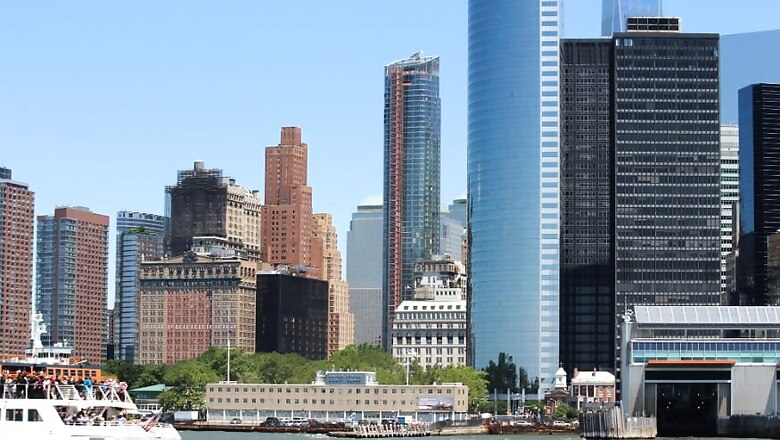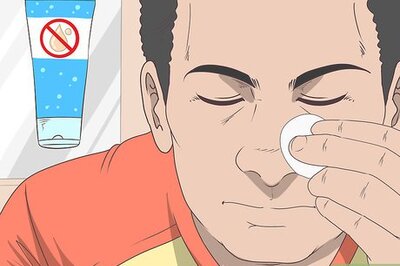
views
In the Indian imagination, places like Badaun, Bareilly, Gorakhpur, Bahadurgarh, etc, don’t get good marks. They just don’t match up. They are places which haven’t caught up with the Indian dream and so have been left behind with the poverty and squalor weighted around their necks. In any case these were not places Indians aspired to send their children to or even go and have a look at.
But suddenly the other day we saw thousands thronging the borders of Delhi to rush back to these places. There they would be secure. A meal a day, a roof to sleep under. Whoever thought of escaping to Bareilly? And that too from the comforts of the great historic capital city where the trains ran on elevated platforms and jobs could be had and “bhurghers” eaten.
Suddenly the ugly truth has dawned on us. The city of spires and skyscrapers cannot shelter you. You need to escape to where the cows still graze, the dogs and the deer have a free run and where the streams still run. Actually looking at Connaught Place where the dogs run free and the streets in Wales where mountain goats have descended to have fun or perhaps to graze on the city, tasting grass on the sidewalks, it should have hit us: our cities have become villages overnight. We built the cities and now are scared of it. We have left it to the animals like some dystopian nightmare come true. We had no option.
The novel coronavirus has settled or found good harvest in two of the biggest cities human imagination has conjured up: Wuhan with its aspirational towers in various shapes and sizes, announcing power and ambition, and of course New York, which showed us the way to aspiration and joyful living and after which every other new city is designed. Dubai, Qatar, Abu Dhabi. The closer in design to New York, the better. Tightly packed glass and aluminium towers stretching into the clouds. Within that we humans created new ideas of survival and plotted our future. But the coronavirus drove us out of there. The lights have not glimmered in those towers for sometime now. New York is questioning its own existence as the virus wreaks havoc.
The big metropolitan cities have come to signify the dangers of stacked living, the notion of sitting around a room and planning the Great Tomorrow. Over a weekend, the world ditched the idea and went back home. Civilisation and the future can wait.
“The heartbeat of what we do is gathering, the community of where we live. That’s what keeps me in the Bay Area. It’s certainly not the rent. When everything we do was cancelled, my response was, ’Gosh, then can we go to the country?’” This is Lisa Pezzino, a civil engineer who runs a small music company, quoted in the Washington Post on March 29, 2020. Now Pezzino works from deep in the redwood forest near Big Sur, 140 miles south along the California coast in a tiny cabin with an outdoor kitchen and just one neighbour, the Post reported. That sounds exactly like a scene from a village in Badaun.
It is not that the virus has a liking for people living in skyscrapers. It just thrives in a city where people meet each other in crowded places. We wanted to live like that and our notions of social life were built around meeting each other. Well, you can not yell a computer code over the wall of your neighbour. So we meet. But when danger comes, we flee the city, almost always, and seek solace in the cabins and huts and mud houses of our villages. The virus too found the city an ideal place to thrive.
Are our cityscapes disasters? Did the great designers and architects fail us? Why could not the cities be planned to house virus fugitives too? Is the country with all its salubrious climate and its languorous looks that we always crave for? Wuhan, the city of 11 million, was once a countryside teeming with poverty. It was in a decade transformed into a industrial powerhouse and more, into a city that looked like London or New York. It is a university town where students from India too rush to and it has a climate like a tropical place. It is from the wet markets that line this once poor city that the coronavirus is believed to have started its journey to destroy the world.
When Prime Minister Narendra Modi went to China two years ago, President Xi Jinping took him to Wuhan and they walked along the city’s East Lake and from there came a new term for Indo-China diplomacy, ‘the Wuhan spirit’,which replaced ‘Hindi-China bhai -bhai'. The Wuhan virus would follow soon after. Wuhan is what Modi would love to build in India: an overpopulated and overpolluted city where income per person can soar sixfold in a decade or so. The new megacity Wuhan was all that the new China stood for. Wuhan was a lesson to the rest of the world. Tragically, the second time round too, Wuhan has become a lesson to the world.
The village is not an option. Because the city is the engine house of industrial prosperity; this is where the future is born or created. We decided a long time back that industrial revolution is much better than any agricultural revolution. There’s more cash and instant nirvana. But we didn’t account for viruses.
Now we are left with nowhere to go. What is the longtime option? There surely will come up a middle ground, a mix of Wuhan and Badaun. Joel Kotkin, who wrote The Coming Age of Dispersion, has said that “there will be a longer impact and acceleration of the process that was already starting. The work at home trend was already building , the small towns were already becoming much more cosmopolitan with more and better coffee places and restaurants and the big cities were becoming prohibitively expensive.”
Now when people from across world have become fugitives from the cities which they themselves built to survive disaster and wars, the small town looks so tempting. The coronavirus has humbled us all, a microbe that swept through the world with deadly intent making a mockery of our towering ambitions. The mountainside, the village, the small town is now coming back into our fantasies. Like the farmer, we now suddenly crave to work from under a tree, from inside the kitchen while minding the soup boiling in the bowl.
Historically, cities had a centre and a periphery, to signify inclusion and exclusion. In Paris, the Peripherique built in the 1970s was one such. This concrete highway “remains a powerful physical and psychological barrier between Paris and the suburbs or banlieues beyond”, writes Mira Kamdar in the New York Review of Books.
Delhi has two Ring Roads, one which kept out the lower middle classes and the outer Ring Road meant to exclude the desperately poor, the 'Najafgarh types'. The centre belonged always and in all cities to the privileged. Delhi’s centre is populated by the ruling classes and the higher castes who have a sense of entitlement anyway. They lived around the India Gate and the lights of the big city were all around them. When the nouveau riche came up, they built another city in Gurgaon, resembling Singapore which they so often visited. Gurgaon now mocks at this neighbouring Delhi of babus. Sadly we didn’t plan for keeping out epidemics.
But all these places have become an empty and pathetic symbol of what we never planned for: the microbe. Now we dream of going back to Bareilly and living it out there while the virus cleans out what it can. New York and Wuhan have lost their meaning.


















Comments
0 comment